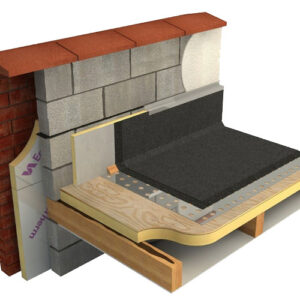Flat roof insulation maximises a building’s energy efficiency and minimises heat loss. A roof is typically classed ‘flat’ if the pitch is below 10°. The way flat roofs are insulated differs from standard pitched roofs.
That being said:
Insulating a flat roof can lead to lower energy use, a reduction in condensation and a decrease in associated household bills.
This guide explores the different types of flat roof insulation, their benefits and the installation options available.
We’ll also look at the latest flat roof insulation regulations.
Table of contents
- What is flat roof insulation?
- Warm roof VS cold roof insulation
- Are there building regulations for flat roof insulation?
- How long does flat roof insulation last?
- How to insulate a flat roof
What is flat roof insulation?
Flat roof insulation helps keep a room feeling warmer in the winter and cooler in the summer months. Wood fibre, cellular glass and polystyrene (EPS or XPS) all have good insulation properties, but foam works particularly well and is often found in modern constructions.
There are two approaches to installing flat roof insulation:
- Cold flat roofing involves fitting insulation between the joists.
- Warm flat roofing works by placing the insulation material on top of the roof.
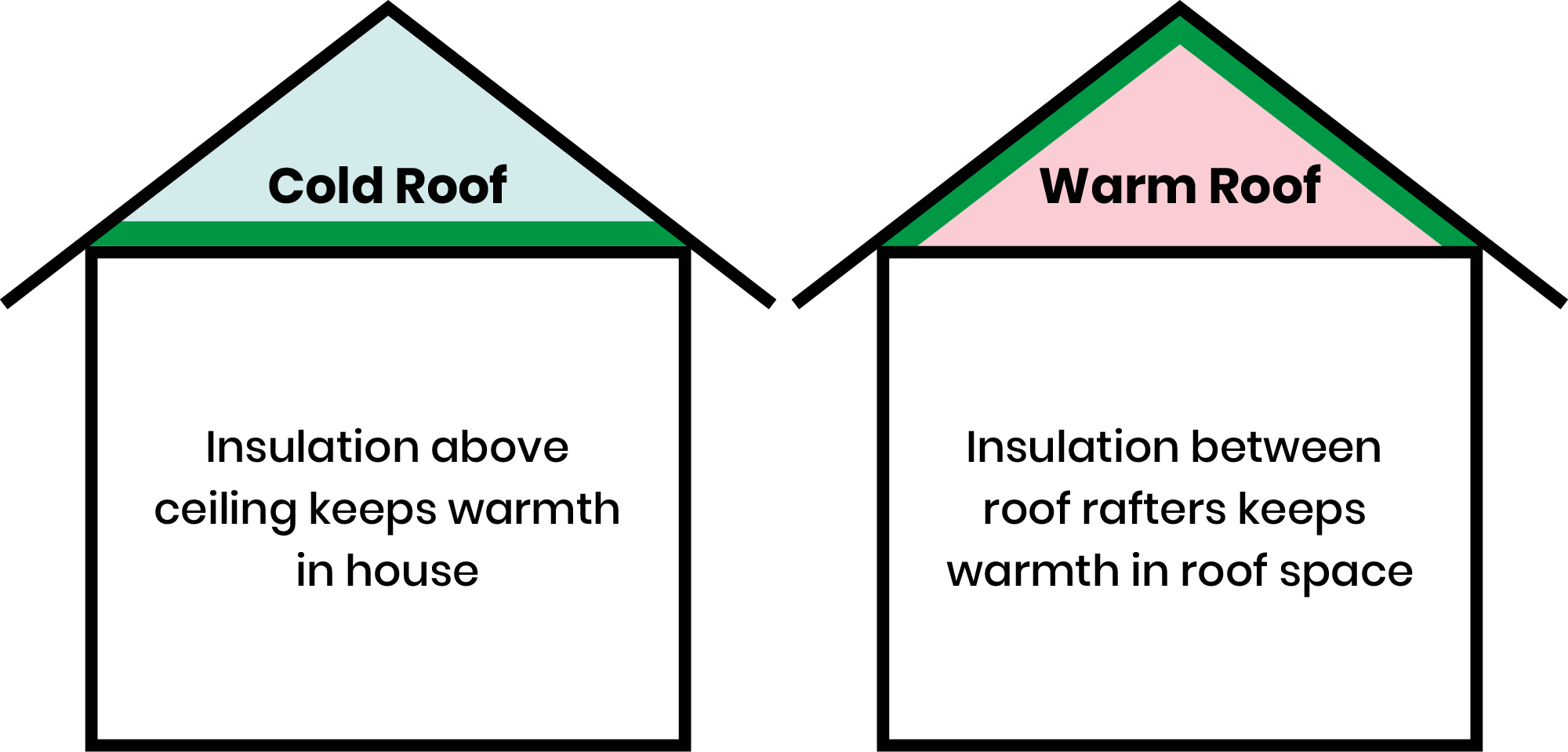
If you want to reduce your energy usage (and energy bills), your best option is warm flat roof insulation. It’ll also improve your property’s Energy Performance Certificate and help to reduce condensation.
On the other hand, cold flat roofing has a much lower installation cost and is well suited to outbuildings, which don’t necessarily require all the benefits of warm flat roof insulation.
Warm roof vs cold roof insulation
Choosing which form of insulation is best for your project largely depends on the type of building you’re working with. Warm flat roof insulation works when you ensure the insulating layer sits above the timber rafts. This results in the roof and loft area being around the same temperature as the one inside the building.
It is, by far, the best choice if you’re insulating a room in your house; its simple design is both thermally efficient and cost-effective. However, be prepared to have scaffolding erected and a team of professionals on hand to install the insulation, as this is not a DIY job.
Alternatively, cold flat roof insulation works by placing the insulation layer between or under the timber rafters. This leaves the roof cold and is generally regarded as an outdated method of flat roof insulation.
It’s not recommended in Scotland due to multiple condensation issues, but if you’re working on an outbuilding, you’ll find it’s cheap to install and is an easy option if you’re creating a flat roof (as opposed to working with an existing flat roof).
Warm roof insulation
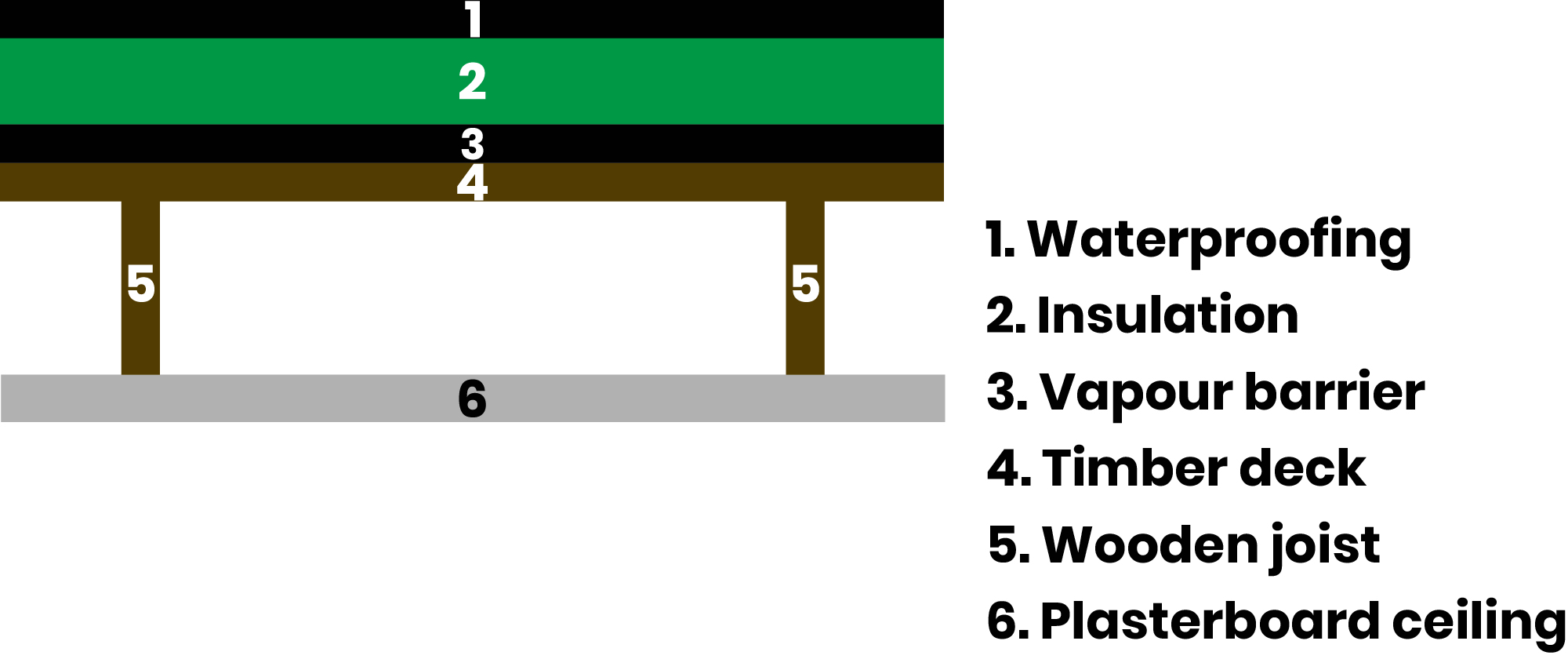
There are many benefits of installing warm flat roof insulation. It allows heat to be conserved without needing roof void ventilation and prevents dampness and decay by enabling moisture to escape.
It is also considered the best roof option for the UK climate. While there are many materials for the job, PIR (polyisocyanurate) boards are a popular choice because they are extremely durable and can withstand being walked on.
This is an important factor to consider as, despite the addition of warm roof insulation, you’ll still need to access the roof to check for any damage over time.
Installing warm flat roof insulation requires specialist equipment, so be prepared to arrange installation with a local expert.
Cold roof insulation

Cold roof insulation is a cheap way of insulating outbuildings, although it typically requires adding a roof void ventilation system to prevent accumulating dampness. It might not be the best solution for flat roof insulation, but its uses are still valuable in specific projects.
While PIR boards are one of the best materials used in warm flat roof insulation, we recommend using loft insulation roll for cold roof insulation. This is because the insulation is most commonly placed between the rafters, and the loft roll is lightweight and easy to manoeuvre, making it the perfect candidate for the job.
Are there Building Regulations for flat roof insulation?
The simple answer is yes. There are Building Regulations that must be adhered to. The latest flat roof insulation amendment came in 2010 as part of Approved Document L. A prominent Building Regulation of this document is U-values.
U-values are measured in Watts per metre squared Kelvin (W/(m²K). In Volume Two of these regulations, the document stipulates a U-value target of 0.18W/m²K for new or replacement flat roofs. The idea behind this is that more insulation should provide better heat retention, which will lower bills and help meet the CO2 emission reduction targets.
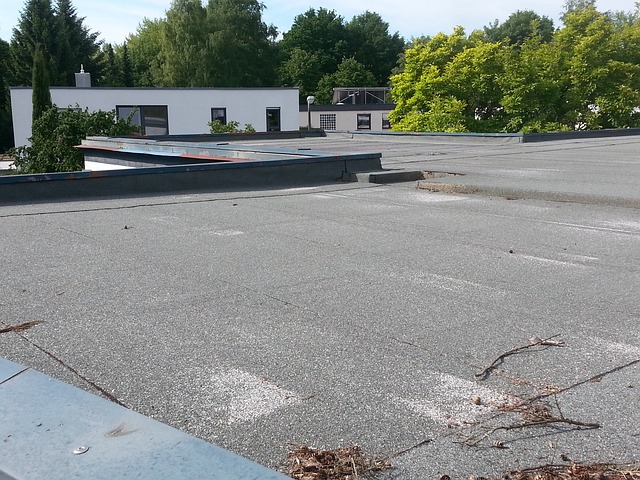
Understanding U-value and regulations
A U-value is a unit used in the UK to tell builders, architects and engineers how good a material is at insulating. The lower the U-value, the better the insulation properties of the material.
As we mentioned earlier, to comply with Part L of the Building Regulations 2010 all roofs should be thermally insulated to a maximum U-value of 0.18W/m²K. You can find out more about Part L Regulations and where find related information in dedicated sections via our guide to Volume One.
So, how do you calculate the U-value of your project?
There’s no denying a U-value is a difficult measurement to calculate, but some handy U-value calculators are available online. With different materials being awarded a variety of U-values, it’s best to have computer software on hand to help you out.
For more information about U-values and how to calculate the U-value of a flat roof insulation project, read our specialist guide to understand what a U-value is.
How long does flat roof insulation last?
Insulation materials tend to be extremely robust. You can expect flat roof insulation to last anywhere between 25 and 40 years. It’s worth noting that warm roof insulation tends to degrade faster than cold roof insulation due to its exposure to the elements.
However, this shouldn’t cause too much concern as the insulation will last at least as long as the durable waterproofing material.
How to insulate a flat roof
While insulating a flat roof is a relatively straightforward process regarding the materials and steps required, much of the job relies on specialist equipment. We advise contacting a professional to complete the project unless you have been trained or are specifically skilled in this area. You can find a comprehensive guide on installing flat roof insulation here.
With that in mind, an expert will typically install it using the following steps:
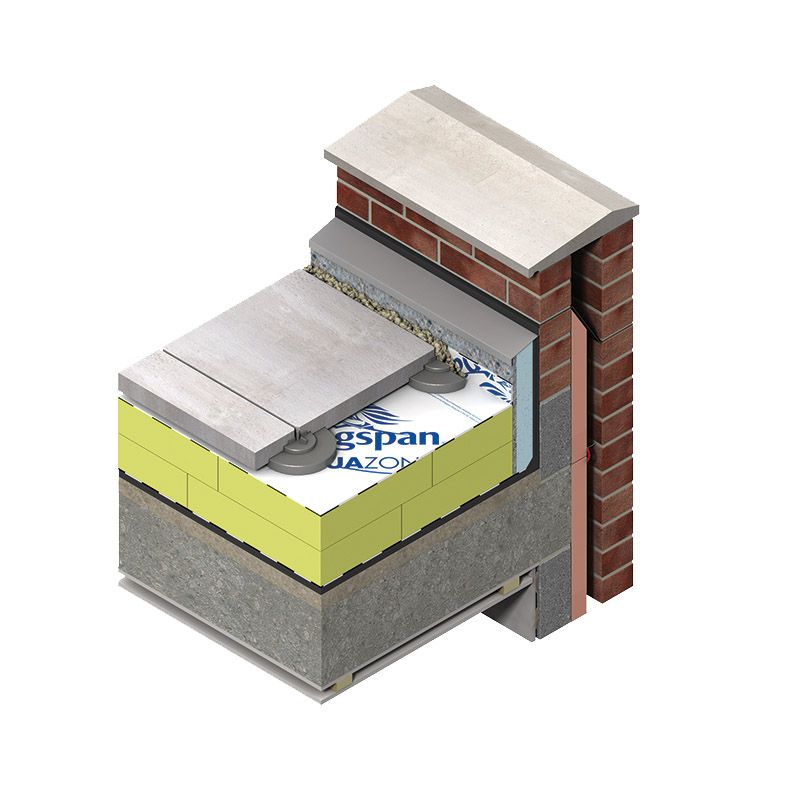
Step one: Lay 12mm of plywood or OSB board across the timber joists. This acts as a base on which to build the flat roof.
Step two: Install the vapour control layer. This layer reduces the risk of condensation and moisture, which would compromise the flat roof structure if it developed.
Step three: Make marks on the vapour control layer to indicate where fixings will pierce the membrane. Remember to mark rafter centres and the correct axial spacing.
Step four: Place butyl tape over the marks indicating where the vapour control layer will be pierced. This will form a seal after penetration.
Step five: Lay rigid insulation board(s) to the desired thickness. The thickness will often be dictated by the height available due to guttering and upstands.
Step six: Install an additional layer of plywood or OSB board.
Step seven: Fix the deck together using helical fixings that pierce each layer of the buildup, including the flat roof insulation.
Step eight: To complete the job, install a waterproof membrane. This finishes off the deck and protects it from the elements.
So, you know how to insulate your flat roof and what your targets are. But what about maintenance?
We’ve got plenty of additional guides to help you out.
Check out all that and more insulation information via our other Help and Advice guides.


